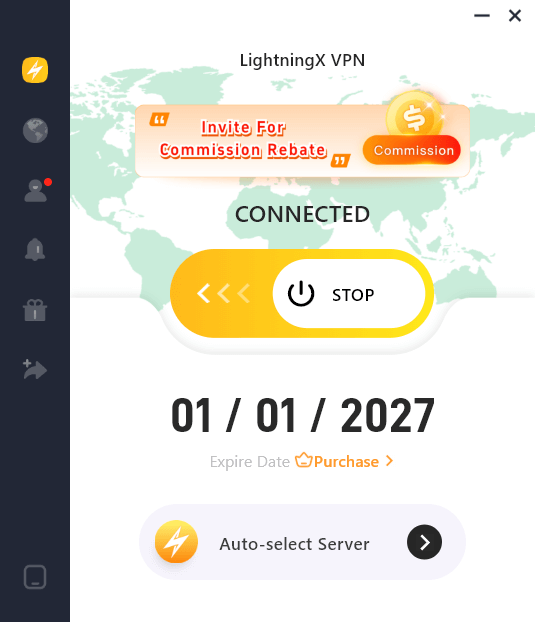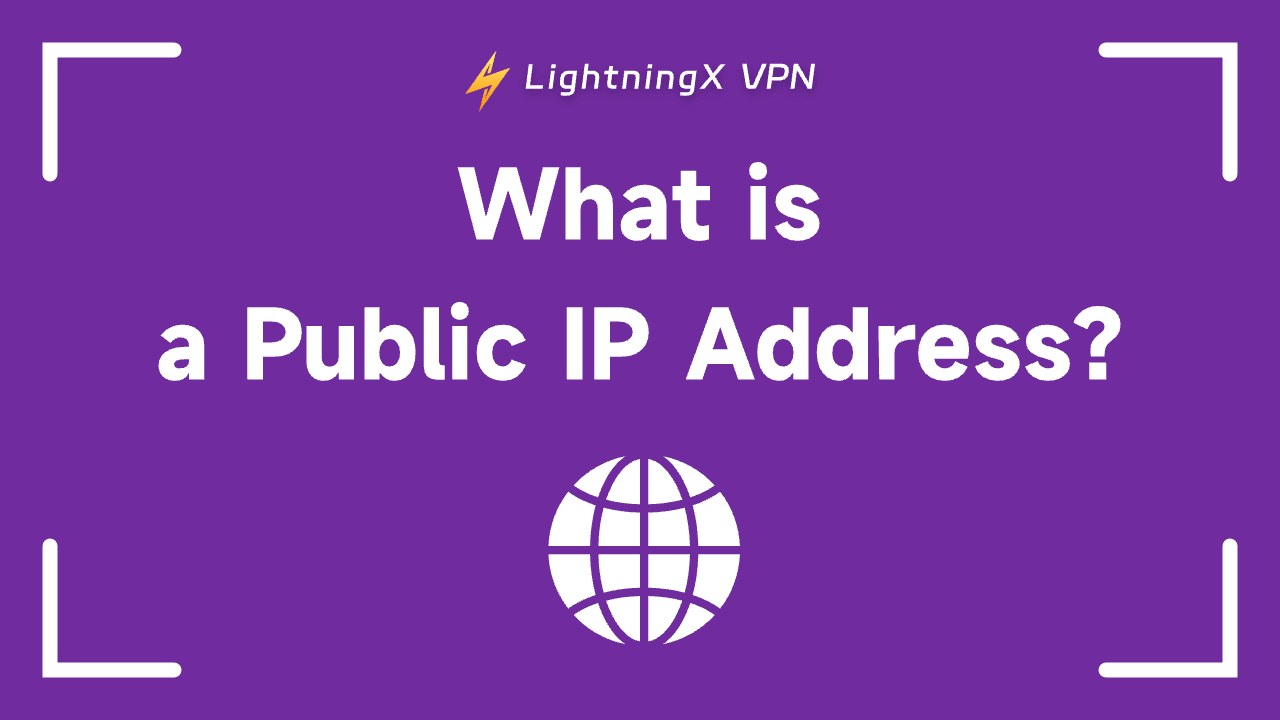In today’s digital world, public IP addresses are the most important identifiers of our everyday electronic gadgets, including computers, tablets, smart watches, and smartphones.
Today, we’ll fully explain to you this identifier by introducing its features, ranges, types, and so on.
What Is a Public IP Address?
A public IP address is a unique numerical identifier assigned to a device on a network that uses the Internet Protocol (IP) for communication. It allows the device to send and receive data across the Internet. These IP addresses are globally routable, meaning they can be accessed from anywhere in the world.
To find your IP address on the open network, you can directly search “what is my IP” on your browser.
Tip: LightningX VPN is an ultra-fast, stable, and secure VPN tool that offers 2000+ servers in 70+ countries. It hides your IP address even in a public Wi-Fi network, preventing hackers from tracking your information. It can easily unblock global information, such as streaming, gaming, and study resources. It now offers free servers for mobile users.

Ranges of Public IP Address
Each device on a network is assigned a unique numerical identifier, known as a public IP address. This assignment follows a standard methodology defined by the Internet Assigned Numbers Authority (IANA) and is organized into classes.
Class A (1-126):
- Format: N.H.H.H (0-255).(0-255).(0-255)
- Network portion: First octet (N)
- Host portion: Last three octets (H)
- Used for large networks, with 128 possible network IDs and up to 16,777,216 host addresses.
- Example: 41.167.11.21
Class B (128-191):
- Format: N.N.H.H (0-255).(0-255).(0-255)
- Network portion: First two octets (N)
- Host portion: Last two octets (H)
- Common in medium-sized networks, with 16,384 network IDs and up to 65,536 host addresses.
- Example: 172.25.110.51
Class C (192-223):
- Format: N.N.N.H (0-255).(0-255).(0-255)
- Network portion: First three octets (N)
- Host portion: Final octet (H)
- Primarily used for small networks, with 2,097,152 network IDs and up to 256 host addresses.
- Example: 200.120.50.11
Features of Public IP Address
Here are three key features of this kind of IP address.
Internet Connectivity: It allows devices to connect to the Internet, facilitating communication and data transfer across various networks. It enhances accessibility and enables global interaction.
Website Hosting: These IP addresses enable hosting websites and applications that can be accessed globally. When a domain name is entered, it’s converted into a public IP address, which then retrieves the website data from the server.
Static vs. Dynamic IP Assignments: It can be static or dynamic. Dynamic IPs are assigned by ISPs via DHCP, improving address efficiency. Static IPs, which remain fixed, offer stability for hosting services and are preferred by businesses for reliable access.
Two Main Types of Public IP Address
Ephemeral: This item is temporary and only exists for as long as the instance (or session) it’s assigned to is active. Once the instance is terminated or shut down, the IP address is released and can no longer be used. This type of IP address is typically used in cloud computing and for short-term needs.
Reserved: This item is persistent and can remain assigned to an instance for as long as necessary. Even if the instance is stopped or terminated, the IP address stays allocated to the user. It can be unassigned and reassigned to another instance as needed. However, a reserved IP on a public load balancer may have different behavior or specific conditions tied to its use.
How Public IP Addresses are Assigned
Internet Service Providers (ISPs)
- Dynamic Assignment: Most home users receive a public IP address dynamically from their ISP. This is done using the Dynamic Host Configuration Protocol (DHCP), where the ISP temporarily assigns a public IP address when the user connects to the internet. These IPs can change each time the user reconnects or after a certain period.
- Static Assignment: Some businesses or users require a static IP address that does not change. ISPs provide these on request, often for an additional cost. A static IP address is ideal for services like hosting websites, running email servers, or providing remote access to systems.
Regional Internet Registries (RIRs)
The allocation of public IP addresses is managed globally by Regional Internet Registries (RIRs). These organizations distribute IP address blocks to ISPs and large corporations in their respective regions. The five main RIRs are:
- ARIN (American Registry for Internet Numbers) – North America
- RIPE NCC (Réseaux IP Européens Network Coordination Centre) – Europe, the Middle East, and parts of Central Asia
- APNIC (Asia-Pacific Network Information Centre) – Asia and the Pacific
- LACNIC (Latin America and Caribbean Network Information Centre) – Latin America and the Caribbean
- AFRINIC (African Network Information Centre) – Africa
Network Address Translation (NAT)
Many users within a private network (e.g., at home or in an office) use private IP addresses (e.g., 192.168.x.x) for internal communication. A router or firewall uses Network Address Translation (NAT) to allow multiple devices to share a single public IP address when communicating with the internet.
How to Protect Your Public IP Address
To protect your public IP address and enhance security, consider these methods:
- Use a VPN: A VPN masks your IP address by routing traffic through a secure server, hiding your real IP, and encrypting data. You can try a robust VPN like LightningX VPN.
- Enable a Firewall: A firewall blocks unauthorized access attempts to your device by monitoring incoming and outgoing traffic.
- Use a Proxy Server: A proxy server can act as an intermediary between your device and the internet, helping mask your real IP.
- Disable Remote Access: Avoid leaving unnecessary remote access services open, such as SSH or RDP, unless you need them, and use strong authentication methods.
- Use NAT: Network Address Translation (NAT) allows multiple devices within a local network to share a single IP address, reducing exposure.
Conclusion
Public IP addresses are essential for internet communication, but they can expose devices to security risks. By using methods like VPNs, firewalls, proxies, and NAT, you can effectively protect your public IP and enhance your privacy and security online.





















